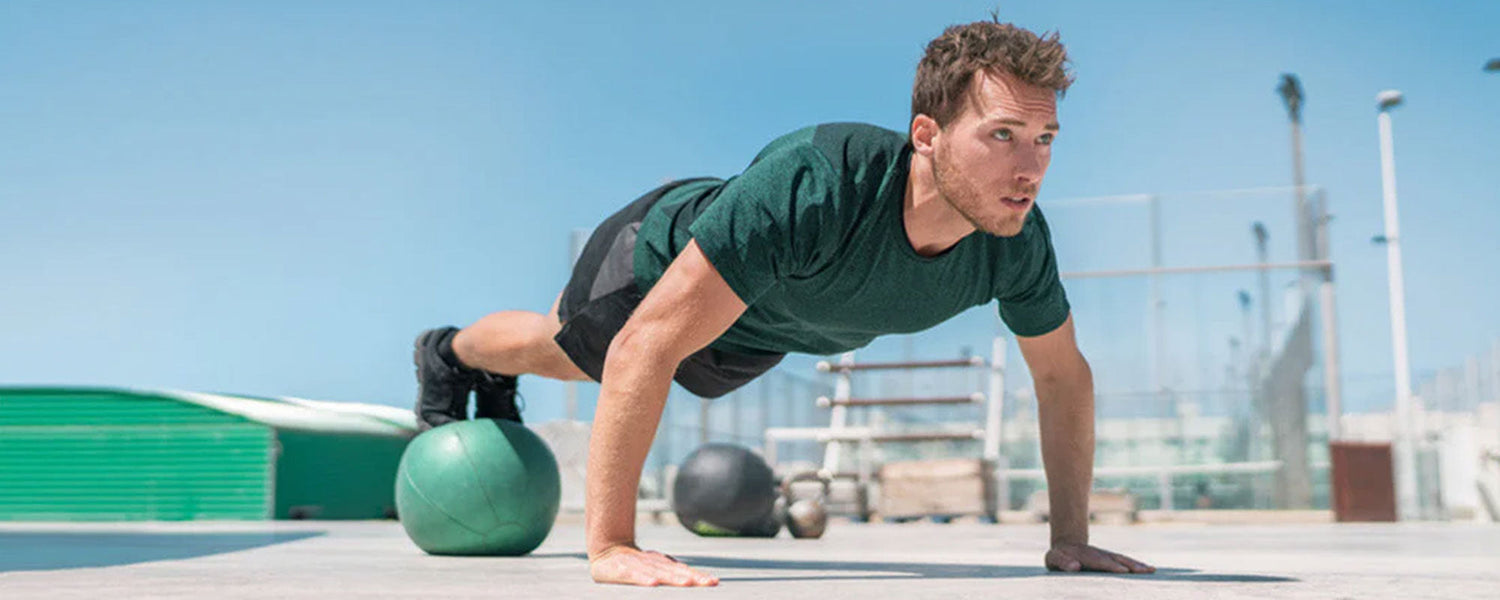Table of content
Body weight training exercises have existed since the ancient Greeks, Romans, and Egyptians. Such training programs consist of simple resistance exercises which require you to overcome a great amount of force being exerted on your entire body.
Body weight training is effective because over 600 muscles are exercised, working together along the bones and joints to facilitate movement throughout the body. Ultimately, body weight training improves the strength and stamina of BJJ athletes.
1. Body Weight Training in the New Era for BJJ
The common body weight exercises that are performed by BJJ fighters in gyms include:
1.1. BJJ Strength and Conditioning Workout Plan
The strength and conditioning workout program aims to make the body fit for jiu-jitsu. Most researchers consider it best to perform BJJ workouts and BJJ bodyweight training in a loop or circuit to attain the desired results. The main goals of a BJJ strength and conditioning workout program include the following:
- Improved core strength
- Improved muscle and joint strength
- Improved hip and glute strength
BJJ athletes should avoid strength and conditioning workout plans with the following characteristics:
- No bodybuilding exercises
- Overtraining
- High risk of injury
1.2. Strength and Conditioning Sessions
A BJJ strength and conditioning workout plan is divided into several sessions.
Session One
After warming up, the first session of the training program focuses on doing cycling, squats, bench presses, and chin ups. The table below gives an overview of session one:
| Exercise | Number of Sets | Reps |
|---|---|---|
| Barbell Front Squats | 4 | 6-8 |
| Barbell Push Press | 4 | 6 |
| Barbell Bench Press | 4 | 6-10 |
| Chin Ups | 3 | 20-30 |
| Airdyne Bike | 2 Tabata Intervals | At least one min of rest before resuming |
Session Two
The second session consists of get ups, pulls, squats, and rows. The table below gives an overview of session two:
| Exercise | Number of Sets | Reps |
|---|---|---|
| HIgh Pulls | 4 | 5 |
| Splitted Squats | 2 | 10 |
| Barbell Squat and Press | 2 | 10 |
| Barbell Rows | 2 | 6 |
| Turkish Get ups | 2 | 8 ( two sets for each side) |
Session Three
The third session is made up of press ups, presses, curls, pikes, and extensions. The table below gives an overview of session three:
| Exercise | Number of Sets | Reps |
|---|---|---|
| Hindu Press Ups | 2 | Maximum |
| Shoulder Bridge Press | 2 | Maximum |
| Ball Hamstring Curls | 2 | 20 |
| Ball Back Extensions | 2 | 10 |
| Ball Pikes | 2 | 10 |
BJJ Circuit
There are plenty of different weight training methods to improve Jiu-Jitsu fights. Among them ‘ BJJ circuit’ means a chain or series or loop of exercises which are executed in specific time duration or repetitions, one followed by another. Maximum one minute time is allowed for a break and then start the next circuit.
The intensive BJJ weight training circuit may look like this:

Adjust Body Weight Program for BJJ
In about a week, 4-5 hours of body weight training can result in stress, exhaustion, and risk of injury. You can add extra exercises to your workout program if you feel you are ready for a higher level of difficulty. Day 1 has different exercises of different sets.
| Days | Exercise | Sets | Reps |
|---|---|---|---|
| Day 1 | Barbell Front Squats | 2 | 6-8 |
| Day 1 | Plyometric Rotational Jumps | 1 | 12 |
| Day 2 | Kettlebell Clean & Press | 3 | 10 |
| Day 3 | Chin Ups | 2 | 20-30 |
| Day 3 | Clap Press Ups | 2 | 8 |
Injury Prevention Exercises for BJJ
The following exercises are recommended as they have low risk of injury that will not hamper your performance in BJJ. Perform these exercises at least 2-3 times per week.
- Rotator Cuff
- Neck Exercises
- Kettle Shoulder Press
- Reverse Curls
1.3. Calisthenics For BJJ
The calisthenics for Brazilian Jiu-Jitsu include:
- Push-Ups
- Sit-Ups
- Squat Thrusts
- Yoga
- Single Leg
- Grip Variations
Jump training helps BJJ practitioners develop faster and gain strength while yoga helps with coordination between the mind and body.
1.4. Benefits of Calisthenics for Jiu-Jitsu
The following benefits associated with calisthenics include:
- No equipment required
- Good for the joints
- Better muscular endurance
- Less risk of injury
- Beginner-friendly
1.5. Disadvantages of Calisthenics for Jiu-Jitsu
The following disadvantages associated with Calisthenics include:
- Inability to lift heavy weights
- Less variation in exercises
- Focus primarily on upper body
1.6. Can Calisthenics and BJJ Work Together?
Yes, calisthenics provides a strong foundation for BJJ training. It provides a full range of motion and movement to your bones and joints and is helpful to build muscle strength. Calisthenics reduces the chances of injury that is why it works best with BJJ.
Calisthenics are suitable for beginners, helping them develop strength and promote weight loss. It promotes longevity.
1.7. How Can I Make My Calisthenics More Challenging?
By setting strict time limits and training periods, you can make performing calisthenics more of a challenge. An increased number of repetitions can also make your training program tougher. Be creative by applying maximum load when working your muscles.
1.8. Can Calisthenics Make You Fighting Fit?
Calisthenics will improve your strength, flexibility, and balance. You can make your progress go by faster by adding heavier weights to your training. Just remember to be consistent in your workload, intensity, and level of difficulty.

2. Benefits of Body Weight Exercises for BJJ
Body weight training procedures vary from individual to individual according to their body weight, height, and muscle mass. Moreover, doing intense yet repetitive activities works for multiple muscle groups at once. The benefits associated with body weight training in BJJ include:
- Improved physiological strength
- No equipment required
- No gyms required
- Can be performed with a limited budget
- Convenient
- Adjustable body positions
3. Disadvantages of Body Weight Training
The disadvantages associated with body weight training include:
- Not beginner-friendly
- Difficult for individuals will little experience bench pressing
- Difficult for women with little experience executing upper body weight exercises.
4. Challenges in Training Progression
Progression in body weight training is challenging, but can make your workouts more efficient if you select exercises that exert weight on your muscles at a steady pace with minimal momentum. The intensity of a body weight training program contributes a lot to building up physical strength. Several repetitions and multiple sets at varying speeds with one or two legs and one or two arms add the complexity of your training program.
5. BJJ Bodyweight Exercises at Home
To become proficient in BJJ, you need to be highly skilled when performing specific movements that may help you in BJJ fights. Though you can practice at a gym, it is possible to practice at home by doing drills on the floor or grappling a dummy.
5.1. Drilling for Hip Movement
5.2. Guard Pass Drill
There are many variations of the guard pass in Brazilian Jiu-Jitsu, but the movements are easy for beginners to understand. A guard pass requires perfect footwork to be pulled off successfully.
5.3. Knee Mount Position and Spin Drill
This movement may seem tough at first glance but practicing on a heavy bag will help you learn how to quickly and effectively hold your opponent.
5.4. Low Spin Drill
The low spin is specifically utilized by more experienced BJJ fighters, mostly black belts. This move is useful for escaping and pulling off submissions.
5.5. Drop Spin Drill
The drop spin is an effective guard pass position that allows you to get into a defensive position behind the opponent.
5.6. X-Pass Guard Pass Drill
The x-pass guard pass, also known as the kick pass, allows you to get into the dominant position by releasing your leg from the opponent's hold, much like a knee mount.
5.7. Head Mounted Drill
The basic concept of the head mounted drill is to pin the head towards the center of your opponent's abdomen, then spin to get into the dominant position.
5.8. S Mount Drill
Considerably more challenging, the S mount drill requires a lot of effort and energy to master. This allows you to take the dominant position, making it difficult for the opponent to breathe due to the extreme pressure on the diaphragm.
6. How Often Should I Do BJJ Training?
Consistency is the key to success. Training at least 2-3 times per week will help improve your level of fitness and allow you to climb up the belt ranks. The number of times a person trains per week depend on fitness goals, age, interests, and commitments.
6.1. Two Days Per Week
This schedule is perfect for those who are out of shape, have a busy routine, have kids, or are above the age of 50. Training at least twice a week ensures you improve your skills, keep your body in shape, and improve coordination between your mind and body.
6.2. Three Days Per Week
If you have a busy personal life but want to achieve a higher belt rank, then training three days per week will help you improve your skills and techniques at a faster pace.
6.3. Four Days Per Week
This rigorous training routine is useful if you plan to take part in BJJ competitions. A four day per week plan requires more training time to see a significant improvement in your BJJ skills. This may not leave a lot of time in your personal life, so only do this plan if you have your priorities and commitments sorted out.
6.4. Five+ Days Per Week
A five or more days per week plan requires proper recovery time so you can fully relax your joints and muscles. This plan should focus on stretching and light training only.
7. Summary
Body weight training, when properly planned out and performed, can promote muscular strength and conditioning. A lot of time and effort is required, but luckily you do not need to buy any expensive equipment. But this does not mean only body weight routines are going to be beneficial. As the major disadvantage of calisthenics is it cannot load heavy weights so weight cutting process may stop at any stage of the training.
Photo Credit: @sportsedtv












Leave a comment
This site is protected by hCaptcha and the hCaptcha Privacy Policy and Terms of Service apply.